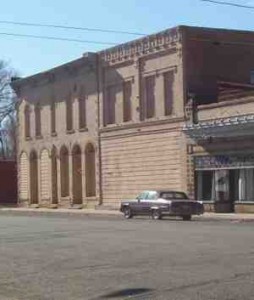Essay by Charles Finn
Wildlife – January 2007 – Colorado Central Magazine
ONE BY ONE as the afternoon shadows stretched across the winter fields north of Pablo, in the Flathead Valley of western Montana, a parliament of snowy owls began to fly up to sit on the neighboring fence posts.
Along the dirt roads circling the fields, cars were pulled over and spotting scopes set up; thermoses of coffee balanced on hoods like ornaments and bird guides felt the familiar ruffle of thumbs. That afternoon I had driven 100 miles to see the owls because I know beauty like this can make you catch your breath. It can break your heart. It can hurt so badly, sting so sweetly, that it becomes addictive.
Seventeen owls stood in the fields or perched on fence posts. They had the attitude of little men — hobbits, one friend said — complete and self-contained. Their patience was monumental, as was their posture. Only on rare occasions did they swivel their hunter’s heads or blink their telescoping eyes. Instead, they appeared to be simply waiting out their portion of eternity with exceptional calm, resigned to the vagaries of fate and hopeful about the carelessness of mice.
Watching them, I wondered what it must mean to be an unsuspecting mouse pounced upon, a deer disemboweled, a salmon swatted from the stream: Is it a kind of love?
“Appetite is one of the gods,” Mary Oliver writes, “with a rough and savage face, but a god all the same.”
For hours the owls hunted in the foot-deep furrows, the tops of their heads showing like errant golf balls. They had arrived two weeks earlier, and despite being called a parliament, each appeared to keep its own counsel. They would fly from the stands of trees along the edge of the reservoir at dawn and return there in the early evening, or roost far out on the snow-covered ice where distance provided the security they needed. Only then, we watchers joked, were their day’s achievements discussed and their lonely ruminations put forth for debate.
I sat on the hood of my car with the wind to my back and looked around. Beauty is notorious for being only skin deep. It is widely known to be the sole propriety of the beholder. By six o’clock nearly 20 owls had flown overhead. One landed in the very top of a leafless cottonwood. The gray afternoon clouds were brilliant behind it and the late afternoon sun highlighted its feathers. When another owl flew in front of the Mission Range to the east, the steep walls of the 10,000-foot mountains were lit up in pink; the white owl flapped its wings in long slow wing beats, all beautiful.
LOWERING MY BINOCULARS, I knew that the more time I spend outdoors watching things like snowy owls, the more I come to believe that beauty might be the hidden reason behind everything, the end-all and be-all of the universe, the very substance of God. Every seed, eggshell and sperm cell is a future expression of the limitless forms beauty can inhabit, and in this sense we are all vehicles for beauty, as well as beauty itself.
That said, on the way home I picked up a large Blackfeet man by the name of Tony Cutfinger who was hitchhiking to Missoula. He told me that shortly after the owls arrived, a naming ceremony was held for a local Blackfeet boy. The boy turned four-years-old that day, my passenger said, and now goes by the name Snowy Owl.
Charles Finn is a contributor to Writers on the Range, a service of High Country News in Paonia, Colorado hcn.org. He writes and observes the world from Stevensville, Montana.

